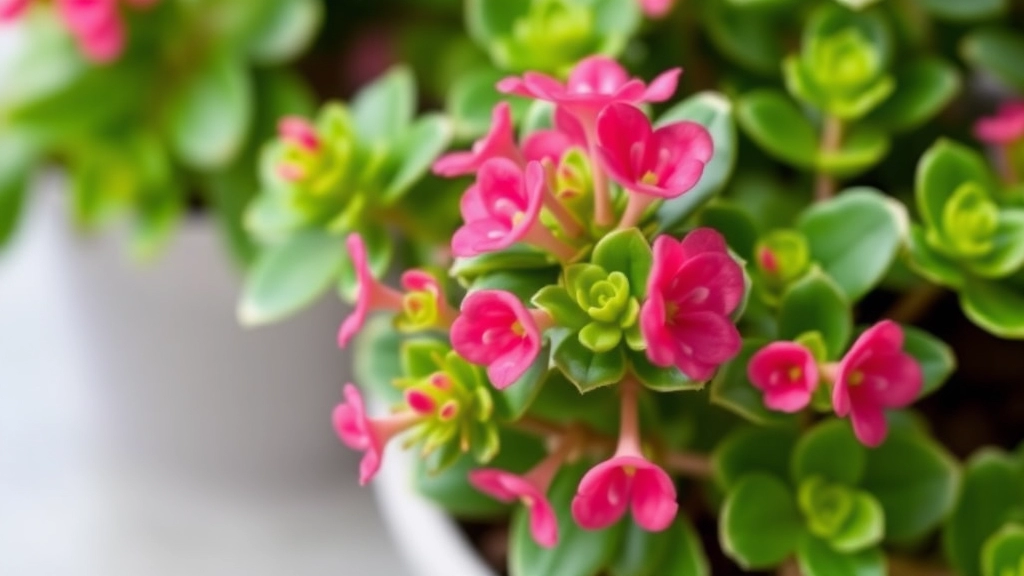Wondering how long do Kalanchoe plants live?
You’re in the right place. These vibrant succulents can bring life to your home for several years with the right care. In this guide, I’ll share practical tips to maximise their lifespan.
Essential Care Tips
From watering schedules to sunlight needs, maintaining a healthy Kalanchoe is simpler than you might think. Stick with me, and let’s dive into the essentials to keep your plant thriving.
Lifespan of Kalanchoe Plants
Have you ever wondered how long Kalanchoe plants can thrive?
Understanding the lifespan of these resilient plants is crucial for any gardener eager to enjoy their vibrant blooms year after year.
Typically, Kalanchoe plants can live anywhere from 3 to 10 years when cared for properly.
Several factors can influence this lifespan, including environmental conditions, care practices, and the specific species of Kalanchoe.
For instance, the popular Kalanchoe blossfeldiana may have a shorter lifespan compared to other varieties, but with the right attention, you can maximise their longevity.
Key Factors Influencing Lifespan:
- Species Variability: Different Kalanchoe species have distinct lifespans. Check out this comprehensive Kalanchoe species list for more information.
- Care Practices: Proper watering, soil, and light conditions play a significant role.
- Environmental Stressors: Temperature fluctuations and pests can shorten their life.
In my experience, I’ve seen how a little extra care can go a long way in extending the life of these delightful plants.
Factors Affecting Kalanchoe Longevity
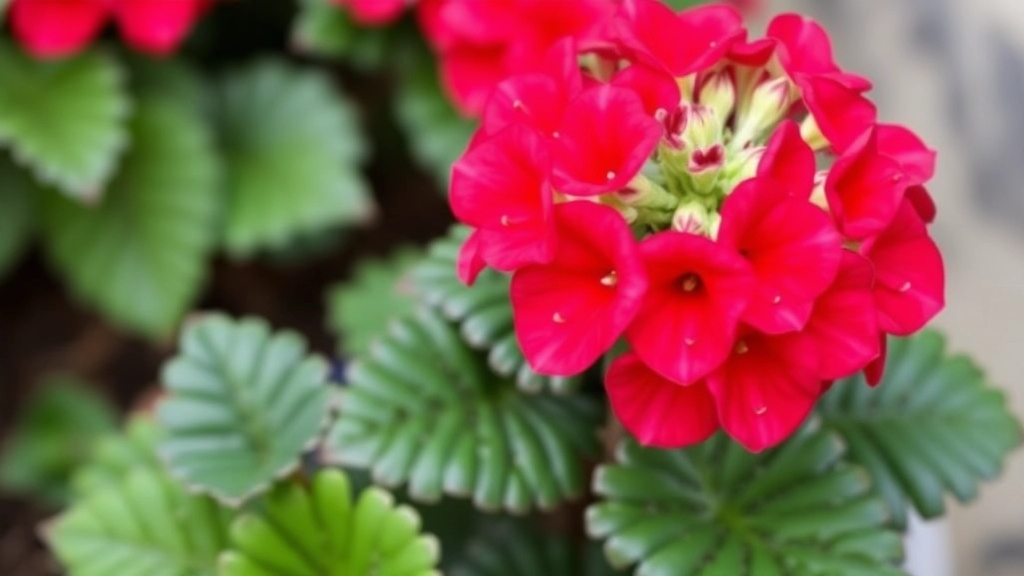
Ever wondered why some Kalanchoe plants thrive while others seem to fade away too quickly?
Several key factors can influence the lifespan of your beloved Kalanchoe. Understanding these can make a world of difference in how long you get to enjoy their vibrant blooms.
1. Light Exposure
Kalanchoe loves the sun!
- Optimal Lighting: They thrive in bright, indirect sunlight. Too little light can lead to leggy growth, while too much direct sun can scorch the leaves.
- Rotation: Rotate your plant every now and then to ensure even growth.
2. Temperature
These plants prefer a cozy environment.
- Ideal Range: Keep them in temperatures between 15°C to 25°C.
- Avoid Extremes: Sudden temperature changes or frost can be detrimental.
3. Humidity Levels
Kalanchoe isn’t too picky about humidity, but…
- Moderate Humidity: They do best in average household humidity. Too much moisture can lead to rot.
- Dry Air: If your home is particularly dry, consider misting occasionally.
4. Nutrient Availability
Just like us, Kalanchoe needs a good diet!
- Fertilization: Use a balanced, water-soluble fertilizer during the growing season.
- Frequency: Feed them every 4-6 weeks for optimal health.
5. Watering Practices
Watering is a fine art with Kalanchoe.
- Soil Check: Always check the soil moisture before watering. They prefer to dry out between waterings.
- Signs of Overwatering: Yellowing leaves or mushy stems? That’s a red flag!
6. Pot Size and Type
The right pot can make all the difference.
- Drainage: Ensure your pot has drainage holes to prevent water from sitting at the bottom.
- Size Matters: A pot that’s too big can hold excess moisture, leading to root rot.
Optimal Growing Conditions
When considering how to extend the lifespan of your Kalanchoe, understanding the optimal growing conditions is essential.
What do you need to create a thriving environment for your Kalanchoe?
Watering and Moisture Requirements
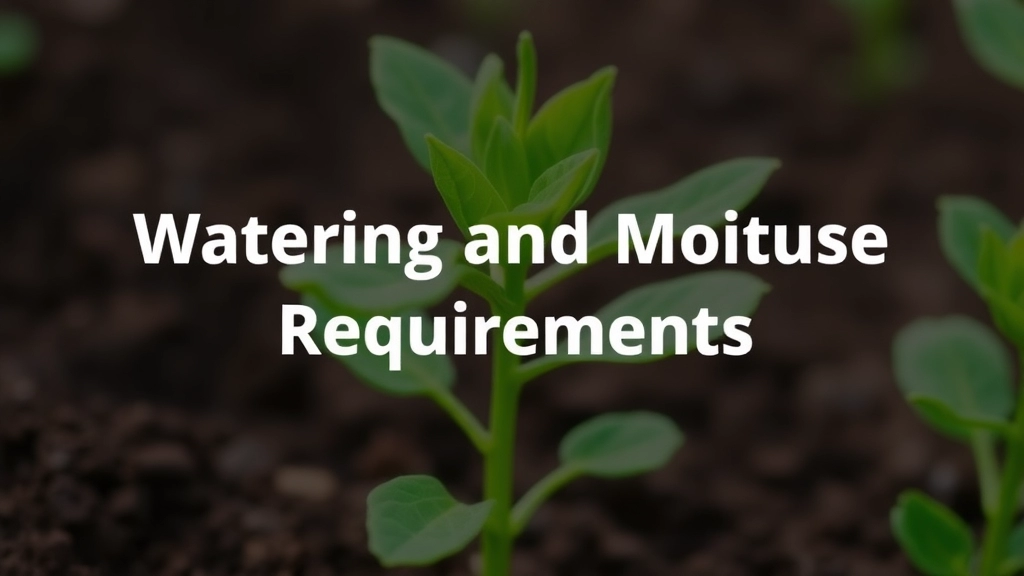
Understanding the watering and moisture needs of Kalanchoe plants is essential for their longevity and overall health. Many plant enthusiasts often worry about how much water is too much or too little.
Key Considerations for Watering Kalanchoe
- Soil Dryness: Always check the top inch of the soil. If it feels dry, it’s time to water.
- Watering Frequency: Generally, Kalanchoe prefers to be watered every 2-3 weeks. However, this can vary based on the season and environment.
- Watering Method: Water thoroughly until it drains from the bottom. This ensures the roots receive adequate moisture without becoming waterlogged.
- Humidity Levels: Kalanchoe thrives in moderate humidity. If your home is particularly dry, consider misting the leaves occasionally.
Signs of Overwatering and Underwatering
- Overwatering: Yellowing leaves, mushy stems, and root rot are clear indicators.
- Underwatering: Wrinkled or shrivelling leaves suggest your plant is thirsty.
Tips for Optimal Watering
- Use Well-Draining Soil: This prevents water from sitting around the roots.
- Adjust for Seasons: During winter, reduce watering frequency as the plant enters dormancy.
- Container Choice: Ensure pots have drainage holes to avoid excess moisture.
Soil and Fertilization Needs
When nurturing your Kalanchoe plants, understanding their soil and fertilization needs is crucial for their longevity. You might be wondering what kind of soil is best or how often to fertilize. Let’s delve into the essentials.
Choosing the Right Soil
Kalanchoe plants thrive in well-draining soil. Here are some key points to consider:
- Cactus or Succulent Mix: Opt for a commercial cactus or succulent soil mix, which provides excellent drainage.
- Homemade Mix: You can create your own by combining equal parts of potting soil, sand, and perlite.
- pH Level: Aim for a slightly acidic to neutral pH (around 6.0 to 7.0) for optimal growth.
A good soil choice not only supports healthy root development but also helps prevent root rot, a common issue among Kalanchoe plants.
Fertilization Guidelines
Fertilizing your Kalanchoe can significantly enhance its growth and flowering. Here’s how to do it right:
- Frequency: Fertilize every 4-6 weeks during the growing season (spring and summer).
- Type of Fertilizer: Use a balanced, water-soluble fertilizer, preferably one formulated for succulents.
- Dilution: Always dilute the fertilizer to half the recommended strength to avoid over-fertilization.
By following these guidelines, you can ensure that your Kalanchoe receives the nutrients it needs without the risk of burning its roots.
Signs of Nutrient Deficiency
Be on the lookout for signs that your Kalanchoe may need more nutrients:
- Yellowing Leaves: This can indicate a nitrogen deficiency.
- Stunted Growth: If your plant isn’t growing as expected, it may need a nutrient boost.
For more in-depth guidance on soil, you can check out the best soil for Kalanchoe Blossfeldiana. Additionally, if you’re facing issues with flowering, our article on why your florist Kalanchoe is not flowering might be helpful.
Pruning and Maintenance Tips
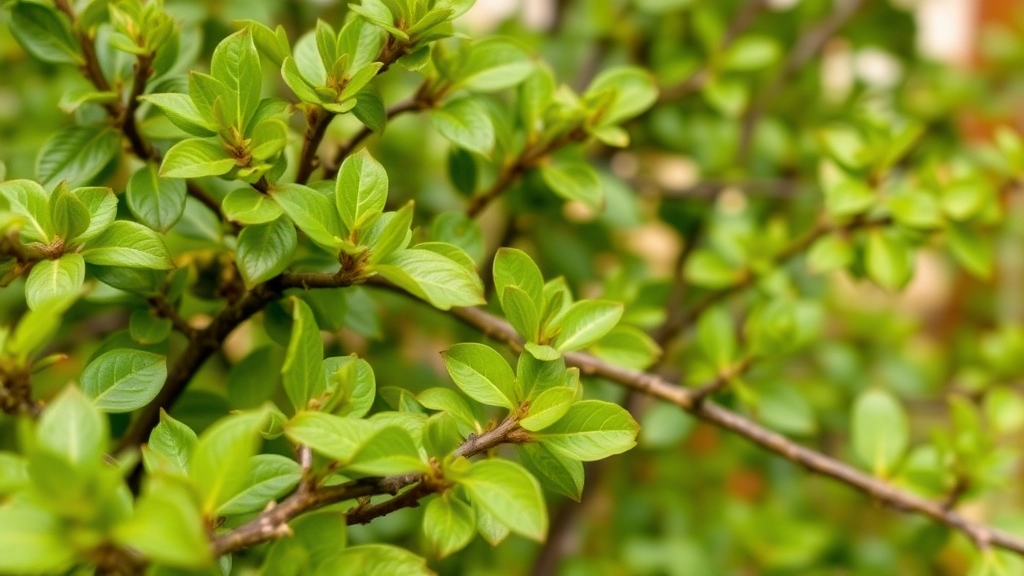
So, you’ve got your Kalanchoe thriving, but how do you keep it looking its best?
Pruning is one of the most effective ways to ensure your plant remains healthy and vibrant.
Why Prune?
- Encourage bushier growth
- Remove dead or yellowing leaves
- Prevent overcrowding, which can lead to pests
When to Prune:
- Best done in spring after blooming.
- You can also do light pruning throughout the year as needed.
How to Prune:
- Use clean, sharp scissors or pruning shears.
- Cut just above a leaf node to encourage new growth.
- Remove any leggy stems to promote a fuller appearance.
Maintenance Tips:
- Dusting Leaves: Wipe the leaves with a damp cloth to keep them clean and allow for better light absorption.
- Rotate Your Plant: Give your Kalanchoe a quarter turn every few weeks to ensure even growth.
- Check for Pests: Regularly inspect your plant for any signs of pests, like aphids or mealybugs.
Common Pests and Diseases
As we delve into the longevity of Kalanchoe plants, it’s crucial to consider the threats that can compromise their health.
Common Pests
Kalanchoe plants can fall victim to a few common pests that may hinder their growth and vitality. Here are the main culprits:
- Mealybugs: These small, white, cotton-like pests often cluster in leaf joints and stem crevices. They suck sap from the plant, leading to yellowing leaves.
- Aphids: Tiny and green or black in colour, aphids can cause distortion in new growth. They also secrete a sticky substance that attracts sooty mould.
- Spider Mites: These minuscule pests thrive in dry conditions. Look for fine webbing and speckled leaves as signs of infestation.
- Scale Insects: Resembling small bumps on stems and leaves, scale insects can weaken your plant by sucking out its juices.
Common Diseases
In addition to pests, Kalanchoe plants are susceptible to various diseases, primarily due to poor care or environmental stress. Here are some common ones:
- Powdery Mildew: This fungal disease manifests as a white, powdery coating on leaves. It thrives in humid conditions and can hinder photosynthesis.
- Root Rot: Often caused by overwatering, root rot leads to wilting and yellowing leaves. The roots may appear mushy and dark.
- Leaf Spot: Characterised by dark, water-soaked spots on leaves, this disease can be caused by fungal or bacterial infections.
Prevention and Treatment
To keep your Kalanchoe thriving, consider these preventive measures:
- Regular Inspection: Check your plants weekly for any signs of pests or diseases.
- Proper Watering: Ensure you’re not overwatering, as this is a primary cause of root rot.
- Good Air Circulation: Position your Kalanchoe in a spot with good airflow to prevent fungal diseases.
- Natural Remedies: For pests, consider neem oil or insecticidal soap as effective treatments. Additionally, maintaining the optimal sunlight for your Kalanchoe can significantly reduce the risk of diseases.
Signs of Aging in Kalanchoe Plants
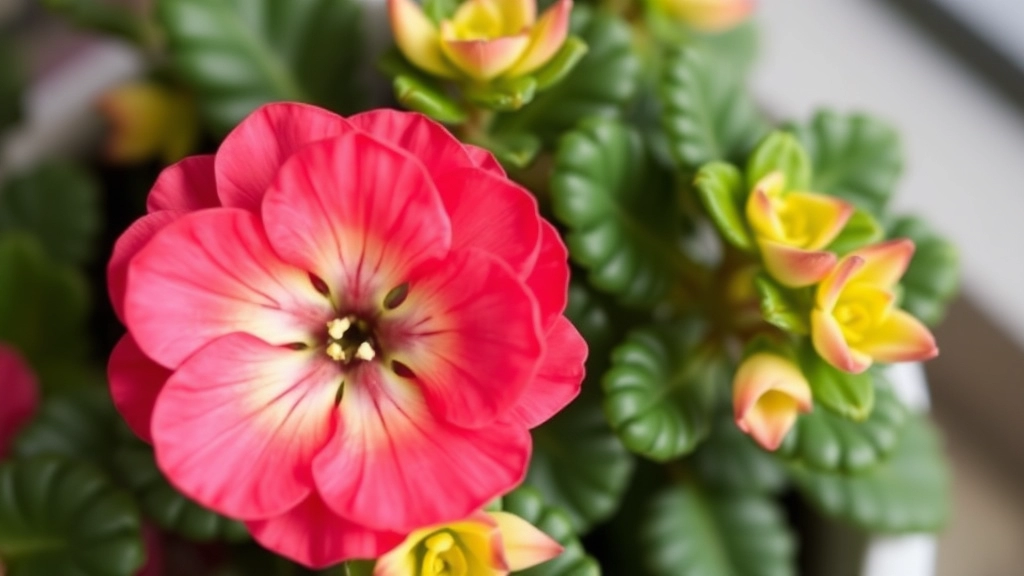
As we dive deeper into the care of Kalanchoe plants, it’s essential to recognise when they’re showing signs of aging.
Have you ever noticed your Kalanchoe looking a bit tired or less vibrant?
Here are some common signs that your plant might be entering its golden years:
- Leaf Yellowing: If the leaves are turning yellow, it could be a sign of stress or nutrient deficiency.
- Drooping Leaves: This can indicate that your plant is struggling to retain moisture or is getting too much water.
- Leggy Growth: When the stems start to stretch out and the plant looks sparse, it’s a sign it’s searching for more light.
- Faded Flowers: If your Kalanchoe isn’t blooming as brightly or frequently as it used to, it might be time to reassess its care.
- Leaf Drop: Losing leaves can be a natural part of aging, but if it’s excessive, it may signal underlying issues.
- Pest Infestation: Older plants can be more susceptible to pests, so keep an eye out for any unwelcome visitors.
- Slow Growth: If you notice that your Kalanchoe isn’t growing as vigorously as it once did, it might be reaching the end of its lifespan.
Recognising these signs early can help you take action and potentially extend your plant’s life.
Propagation Techniques for Longevity
As we explore the ways to maintain the health and vitality of your Kalanchoe plants, understanding propagation techniques becomes essential. Propagation not only allows you to create new plants but also helps rejuvenate older ones, extending their lifespan.
Why Propagate?
Many plant enthusiasts ask, “How can I ensure my Kalanchoe continues to thrive?” Propagation can be a game-changer. It allows you to:
- Create new plants from existing ones, providing a fresh start.
- Control the growth of your plants, ensuring they remain manageable and healthy.
- Share with friends or expand your collection without spending extra money.
Methods of Propagation
There are several effective methods for propagating Kalanchoe, each with its unique benefits:
- Leaf Cuttings:
- Select a healthy leaf from the parent plant.
- Allow the cut end to dry for a day or two to prevent rot.
- Place it in well-draining soil and water lightly.
- Stem Cuttings:
- Cut a healthy stem, ideally about 10-15 cm long.
- Remove the lower leaves and let the cutting dry for a few days.
- Plant it in soil and keep it moist until roots develop.
- Offsets:
- Some Kalanchoe species produce offsets or “pups.”
- Gently separate these from the parent plant and replant them in their own pots.
Tips for Successful Propagation
To maximise your success with propagation, consider these tips:
- Use clean tools to prevent disease transmission.
- Choose the right time: Spring is ideal for most propagation methods.
- Provide warmth and light: Place cuttings in a warm spot with indirect sunlight.
- Be patient: Roots may take a few weeks to develop.
By mastering these propagation techniques, you can not only extend the life of your Kalanchoe but also enrich your gardening experience. For more detailed steps, check out our guide on propagating Kalanchoe Blossfeldiana cuttings. Additionally, if you’re interested in a specific variety, learn about the propagation of Kalanchoe Pink Butterflies.
Seasonal Care and Adaptations
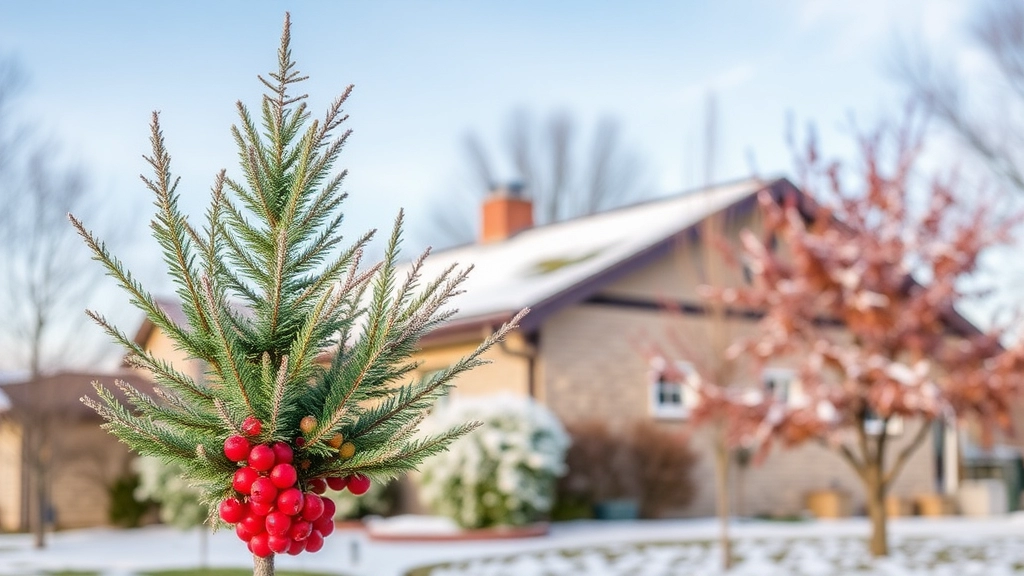
Ever wondered how to keep your Kalanchoe thriving through the changing seasons?
Seasonal care is crucial for maintaining the health and longevity of your beloved plant.
Spring: Time for Growth
- Light: As the days get longer, ensure your Kalanchoe gets plenty of bright, indirect sunlight.
- Watering: Increase watering frequency as the plant comes out of dormancy. Check the soil; it should be dry before you water again.
- Fertilization: Start feeding with a balanced fertiliser every couple of weeks to support new growth.
Summer: Peak Performance
- Heat Management: If it’s scorching outside, provide some shade to prevent leaf scorch.
- Watering: Keep an eye on moisture levels; Kalanchoes love to dry out between waterings, but don’t let them wilt.
- Pest Watch: Summer can bring pests. Regularly inspect your plant for any unwanted visitors.
Autumn: Preparing for Dormancy
- Light Adjustment: As days shorten, gradually reduce direct sunlight exposure.
- Watering: Cut back on watering. The plant will need less moisture as it prepares for dormancy.
- Pruning: This is a great time to tidy up any dead leaves or spent flowers to encourage new growth in spring.
Winter: The Resting Phase
- Light: Place your Kalanchoe in a bright spot, but avoid harsh, direct sunlight.
- Watering: Water sparingly. The plant is dormant and doesn’t need much moisture.
- Temperature: Keep it warm, ideally above 10°C, to prevent shock.
By adapting your care routine to the seasons, you can help your Kalanchoe flourish year-round.
As we explore the lifespan of Kalanchoe plants, it’s essential to consider how their environment impacts longevity.
### Indoor Lifespan
Kalanchoe plants thrive indoors, often lasting several years with proper care.
– **Light Requirements**: Indoor Kalanchoes need bright, indirect sunlight. Too much direct sun can scorch their leaves, while too little can hinder growth.
– **Temperature Control**: They prefer temperatures between 15°C and 25°C. Consistent warmth helps them flourish.
– **Humidity Levels**: Indoor environments tend to be drier. A little humidity can go a long way in keeping them healthy.
– **Pest Management**: Indoor plants are less susceptible to pests but can still face issues like mealybugs. Regular checks can prevent infestations.
### Outdoor Lifespan
When grown outdoors, Kalanchoe plants can live just as long but face different challenges.
– **Sun Exposure**: They enjoy full sun but can struggle in extreme heat. Afternoon shade can be beneficial during peak summer.
– **Soil Quality**: Outdoor soil must drain well to prevent root rot. Amend it with sand or perlite if necessary.
– **Weather Conditions**: Rain, wind, and temperature fluctuations can stress outdoor plants, potentially shortening their lifespan.
– **Wildlife Interactions**: Outdoor Kalanchoes may attract pests or be damaged by animals, which can impact their health.
In summary, while both indoor and outdoor Kalanchoes can thrive for years, the conditions they face significantly affect their lifespan. For more detailed tips on outdoor care, check out our [expert guide for florists](https://planthq.org/outdoor-kalanchoe-growing-tips-expert-guide-for-florists/) and if you are dealing with issues like pests, our [complete guide to Kalanchoe plant care](https://planthq.org/complete-guide-to-kalanchoe-plant-care/) might be helpful.
Extending the Life of Your Kalanchoe
So, you’ve fallen in love with your Kalanchoe, and now you’re wondering how to keep it thriving for years to come.
Here are some practical tips to extend the life of your Kalanchoe:
- Provide Plenty of Light: Kalanchoe loves bright, indirect sunlight. Place it near a window where it can soak up the rays without getting scorched.
- Watch the Water: Overwatering is a common mistake. Let the soil dry out between waterings. A good rule of thumb is to water every 2-3 weeks, depending on the season.
- Feed It Right: During the growing season, a balanced, water-soluble fertiliser every month can do wonders. Just dilute it to half strength to avoid overwhelming your plant.
- Prune Regularly: Keep an eye on those dead leaves and spent flowers. A little pruning goes a long way in keeping your Kalanchoe looking fresh and vibrant. For more detailed steps, check out our pruning guide.
- Repot When Necessary: If your Kalanchoe outgrows its pot, it’s time for a new home. Choose a pot that’s just a size up to avoid overwatering issues.
- Keep an Eye on Pests: Regularly check for pests like mealybugs or aphids. A gentle wash with soapy water can help keep them at bay.
- Adjust for Seasons: In winter, reduce watering and keep it in a cooler spot. This mimics the plant’s natural dormancy period. For more seasonal tips, visit our winter care guide.
FAQs About Kalanchoe Plant Longevity
How long do Kalanchoe plants typically live?
Under optimal conditions, Kalanchoe plants can live for several years. However, their lifespan can be influenced by factors such as light exposure, temperature, humidity, nutrient availability, and watering practices.
What type of light exposure is best for Kalanchoe plants?
Kalanchoe plants thrive in bright, indirect sunlight. Too little light can lead to leggy growth, while too much direct sun can scorch the leaves. Rotating the plant occasionally can ensure even growth.
What is the ideal temperature range for Kalanchoe plants?
Kalanchoe plants prefer temperatures between 15°C to 25°C. Avoid sudden temperature changes and frost, as these can be detrimental to the plant’s health.
Do Kalanchoe plants require high humidity levels?
Kalanchoe plants do well in average household humidity. While they are not too picky, too much moisture can lead to rot. If your home is particularly dry, consider misting the plant occasionally.
How often should I fertilize my Kalanchoe plant?
Use a balanced, water-soluble fertilizer during the growing season, typically every 4-6 weeks. This helps ensure the plant receives the necessary nutrients for optimal health.
What are the signs of overwatering and underwatering in Kalanchoe plants?
Signs of overwatering include yellowing leaves, mushy stems, and root rot. Underwatering is indicated by wrinkled or shriveling leaves. Always check the soil moisture before watering to avoid these issues.
How should I prune my Kalanchoe plant?
Pruning is best done in the spring after blooming. Use clean, sharp scissors or pruning shears and cut just above a leaf node to encourage new growth. Light pruning can also be done throughout the year as needed.
What are common signs of aging in Kalanchoe plants?
Common signs of aging include leaf yellowing, drooping leaves, leggy growth, faded flowers, leaf drop, pest infestation, and slow growth. Recognizing these signs early can help you take action to potentially extend the plant’s life.
How should I care for my Kalanchoe plant during different seasons?
Seasonal care is crucial for maintaining the health and longevity of your Kalanchoe plant:
- Spring: Increase watering frequency and start fertilizing to support new growth.
- Summer: Provide shade during scorching heat and regularly inspect for pests.
- Autumn: Reduce watering and prune dead leaves or spent flowers.
- Winter: Water sparingly and keep the plant in a bright, warm spot.
References
-
How to Grow and Care for Kalanchoe Plants
-
Kalanchoe Plant Care: Learn How To Grow Kalanchoe Plants
-
Kalanchoe: How to Grow and Care for Kalanchoe Plants
